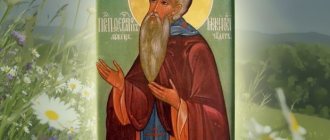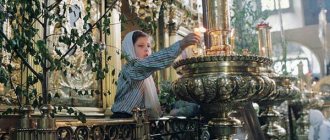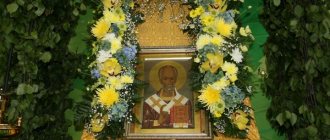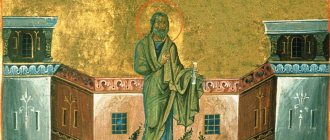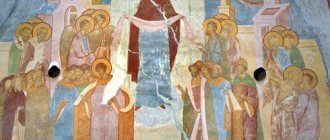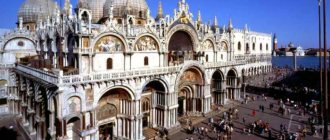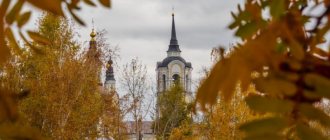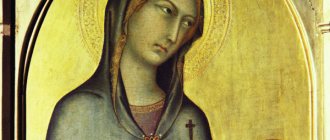What church holiday is November 3, 2021? November 3 marks 4 Orthodox church holidays. The list of events informs about church holidays, fasts, and days of honoring the memory of saints. The list will help you find out the date of a significant religious event for Orthodox Christians.
The world celebrates this day
International men's day
In 2000, male “discrimination” was ended, and the world community began to celebrate World Men's Day annually on the first Saturday of November. The initiative of this holiday belongs to Mikhail Gorbachev. Men's Day is traditionally celebrated in many countries, although it is not officially approved.
Man Photo: Screenshot
Ukrainian Artillery Day
November 3 is Artillery Day in Ukraine. This professional holiday was established by Presidential Decree of October 31, 1997.
Rocket Forces Photo: Screenshot
Ukrainian Engineering Troops Day
Every year on November 3, Ukraine celebrates a professional holiday - Engineering Troops Day. It was approved by Presidential Decree in 1999 as a sign of the outstanding merits of sappers, veterans and military engineers of Ukraine.
Church Orthodox holidays November 3
| Hilarion's Day of St. Hilarion the Great | It is the day of remembrance of the holy ascetic Hilarion (291-371), originally from the Palestinian village of Tawafa. He had the gift of expelling unclean spirits. |
| Venerable Hilarion, schema-monk of Pechersk | Dedicated to the associate and disciple of St. Theodosius - Hilarion. He was a book writer. After his death in 1066, he was buried in the Far Caves. |
| Transfer of the relics of St. Hilarion, Bishop of Meglin | The Orthodox Church remembers the transfer of the holy relics of Bishop Hilarion from the city of Meglin to the city of Tarnov (Bulgaria). This solemn event took place in 1206. |
| Venerable Hilarion of Pskovozersk, Gdov | Homage to the memory of the founder of the Ozersky Intercession Monastery near Gdov in 1460 - Hilarion. |
Venerable Hilarion the Great (371-372).
The Monk Hilarion the Great was born in 291 in the Palestinian village of Tawafa.
He was sent to study science in Alexandria, where he met Christians and received holy Baptism. Having heard about the angelic life of St. Anthony the Great (January 17), Hilarion went to him to learn to please God. Soon Hilarion returned to his homeland. His parents have already died.
Having distributed his property to relatives and the poor, Hilarion settled in the desert near the city of Maium. The monk strenuously struggled with unclean thoughts that confused the mind and inflamed the flesh, defeating them with hard work, fasting and diligent prayer. The devil frightened the saint with ghosts and apparitions. During prayer, Saint Hilarion heard the crying of children, the sobbing of women, the roar of lions and other animals. The monk understood that these horrors were caused by demons in order to drive him out of the desert, so he overcame his fear with the help of fervent prayer.
One day, the Monk Hilarion was attacked by robbers, and with the power of his word he convinced them to leave their criminal life. Soon all of Palestine learned about the holy ascetic. The Lord granted St. Hilarion the power to cast out unclean spirits.
With this gift of grace, he freed many sick people from their bonds. The sick came for healing, and the monk healed illnesses for free, saying that the grace of God is not for sale. Through the sense of smell, the saint learned what passion a particular person was possessed by. Those who wanted to save their souls under his leadership also came to St. Hilarion.
With the blessing of the monk, monasteries began to arise throughout Palestine. Moving from one monastery to another, he established a strict ascetic lifestyle in them. Seven years before his death († 371-372), the Monk Hilarion settled in Cyprus, where he labored in a deserted place until the Lord called him to Himself.
Transfer of the relics of St. Hilarion, Bishop of Meglin
(1206)
.
The transfer of the relics of St. Hilarion, Bishop of Meglin, to the Bulgarian city of Tarnov took place in 1206.
Before this event, the body of the saint rested in the city of Meglin. Saint Hilarion received a good Christian upbringing. In the 18th year of his life, he left the world and went to a monastery, where he was soon elected abbot for his virtuous and strict life.
Caring for the salvation of the souls entrusted to him, he tirelessly called on the monks not to waste precious time intended for salvation. Hilarion was especially persistent in eradicating drunkenness. In 1134 he was ordained Bishop of Meglin. At this time, the Bogomil heresy spread in Bulgaria. Heretics adhered to the false teaching according to which good and evil are independent principles between which a struggle takes place. Saint Hilarion, with apostolic zeal and fervent prayer, stood up to fight false teaching.
He tirelessly denounced the heresy of the Bogomils, removing from them the hypocritical guise of piety. Refuting the teachings of the heretics, the saint said: “You are not Christians at all, for you are hostile to the Cross of Christ the Savior, do not recognize the One God, and blaspheme the ancient Revelation (Old Testament), revered by Christians. You deceive ordinary people with hypocritical meekness, but are filled with pride.
There cannot be true piety in those who do not recognize the corruption of their hearts and do not ask for God’s grace through prayer and humility. Evil thoughts, envy, vanity, vanity, deceit, lies are not the work of the evil substance in a person and are not overcome by fasting. They are the fruit of pride and therefore require spiritual achievements to eradicate.” Many heretics, after the saint’s edification, abandoned false teaching and returned to the bosom of the Holy Church.
Saint Hilarion also tirelessly and successfully fought against the penetration into Bulgaria of the heresy of the Armenian Monophysites, who recognized only one nature in Christ. The saint reposed in 1164. Sschmchch. Pavlina, Archbishop Mogilevsky, Arkady, bishop. Ekaterinburg, and with them Anatoly and Nikandra presbyters and martyr. Cyprian
(1937
)
Sschmch. Damiana, Archbishop Kursky (1937)
.
Sschmchch. Constantine, Sergius, Basil, Theodore, Vladimir, Nicholas, John, Basil, Alexander, Demetrius and Alexy presbyters, Sergius and John deacons and martyr. Sophronia (1937)
.
Prmts. Pelagia (1944).
St.
Hilarion, schema-monk of Pechersk, in the Far Caves (XI)
.
St. Hilarion of Pskovoezersky, Gdovsky. Prpp. Theophilus and Jacob of Omuch (c. 1412)
.
Mchch. Dasia, Gaia and Zotika (303)
.
St. Hilarion, Metropolitan Kievsky (XVI)
.
Transferred. relics of St. Christodoulos, Patmos (Greek)
.
Mch. Ursula of Cologne and her companions (383)
.
Novoschmch. Pavlin (Kroshechkin) Archbishop of Mogilev (1937).
St. Condide the hermit of Fontenelle.
World events
1888 — The first performance of the symphonic suite “Scheherazade” by Nikolai Rimsky-Korsakov in St. Petersburg.
1888 — Jack the Ripper commits his last crime.
1897 - first ascent of an all-metal airship
1897 - the first ascent of the all-metal airship “Metalballon” designed by David Schwartz in Berlin ends in the destruction of the aircraft due to engine failure.
1903 — Fearing that the United States might choose another location for the canal if Colombia continued to delay ratification of the Panama Canal Zone Agreement, Panamanian rebels, with military support from the United States, declared Panama's independence from Colombia.
1905 - restoration of Finnish autonomy.
1906 - according to the International Radiotelegraph Convention signed in Berlin, the SOS signal was established as a single distress signal for radio communications at sea.
1907 - The world's first helicopter flies in France.
1918 — The decision of the People's Assembly in Chernivtsi on the annexation of Northern Bukovina to Ukraine.
1954 — “Godzilla” is released on screen for the first time in Japan.
1957 - the Sputnik-2 spacecraft was launched in the USSR with the dog Laika on board. The dog died 7 hours after launch from overheating.
1973 — The American space probe Mariner 10 was launched.
Signs of the day
- Clear skies and clear weather on St. Hilarion's day mean warming.
- If the smoke goes up or rises in a column, the weather will be clear and warm. The same thing will happen if the smoke rises in a column.
- There will be frost and clear weather if on the evening of November 3 there is a scarlet order and many stars in the night sky.
- Snow fell on Hilarion and did not melt on the trees, which means it will lie on the ground.
- If not all the leaves have fallen from the trees by November 3, the winter will be harsh
- Setting off on St. Hilarion's Day means there will be misfortune.
- If snow falls on the frozen ground on Hilarion's Day, there will be a large harvest of grain.
- Nothing should be lifted from the road on this day - misfortune will happen.
- You can’t defecate on the road - you can catch a serious illness.
- If you scatter grain at a crossroads on this day, it will help appease the souls of the dead. They will come in the form of birds and peck at him.
Comments
Venerable Hilarion, schema-monk of Pechersk
Hilarion, Metropolitan of Kiev (11th century), Russian. Orthodox theologian and church activist Metropolitan Hilarion of Kiev is included in the calendar of the Russian Orthodox Church (October 21). On the same day, another Hilarion, the schema-monk of Pechersk, is also honored. Many historians believe that this is the same person.
It is known about the schema-monk Hilarion that he lived in the same cell with the Monk Theodosius of Pechersk and diligently copied books. He was distinguished by particularly strict abstinence. He died peacefully in 1066 and was buried in the Far Caves.
From the “Tale of Bygone Years” it is known that Hilarion of Kiev was a priest of the princely church in the village of Berestov (near Kyiv) and that in 1051, at the request of Prince Yaroslav the Wise, he was made metropolitan. The chronicler notes that I. was “a good man, a learned man and a faster.” The Metropolitan took an active part in educational activities and states. activities of Prince Yaroslav. After the death of the prince (1054), the name I. is no longer found, and in 1055 a new metropolitan arrived in Kyiv, this time a Greek.
The following works of Hilarion are known: “The Sermon on Law and Grace”, which is accompanied by “Prayer” and “Confession of Faith” (*attribution was first established by Archpriest *Gorsky). I. wrote while he was a priest. The “Word” testifies to a vast church. erudition of the author, theologian. the education of the audience he was addressing, and about the originality of I.’s thinking. Like St. Petersburg, who lived in the same century. Nestor the Chronicler, I. are deeply imbued with the Bible. *historicism and considers the Christianization of Rus' in the context of world events and the sacred. stories. Following the apostle Paul, he allegorically interprets the tales of Genesis about Hagar and Sarah, which are for him * prototypes of the Old and New Testaments. I. contrasts *Law and Grace as two stages of the *Economy - imperfect (OT = Hagar) and perfect (NT = Sarah). According to the legend, the slave Hagar gave birth to a son for Abraham before the time had come for the true heir, Isaac, to be born. In the same way, grace was slow to appear among people and itself begged God to send people a temporary instruction - the Law. He was a shadow, “an image and not the truth.” Just as after the birth of Isaac, Hagar and Ishmael had to leave home, so the Law was abolished by the coming of Christ the Savior. Just as the reason for Hagar’s expulsion was the insult she inflicted on her mistress, so the reason for the rejection of the Jews was their exaltation in those days when “in Jerusalem both Jews and Christians were still together.” The law darkened like the moon at sunrise. Grace began to spread among the nations until it reached Rus'. I. emphasizes the national limitations of the Law and the universalism of the Gospel. Thank you. I. professes faith in the *unity of the Bible and blesses “the Lord, the God of Israel, the God of the Christian,” for He “did not allow His creation to be possessed by idolatrous darkness and to perish in demonic service. But first He justified the tribe of Abraham with the tablets and with the Law, and then through His Son He saved all nations with the Gospel and Baptism, introducing them into the renewal of rebirth, into Eternal Life.”
Venerable Hilarion of Pskovozersk, Gdov
The Monk Hilarion of Gdov, Pskovoezersk, was a disciple of the Monk Euphrosynus of Pskov (May 15). In 1460, he founded the Ozersky Pokrovsky Monastery on the banks of the Zhelchi River, not far from Gdov. The monastery was located on the border with the Livonian Order, so the monks constantly suffered attacks from the militant order. Despite difficult conditions and lack of funds, the Monk Hilarion established high piety in the monastery. At the same time, great work was carried out to strengthen and improve the monastery.
The Monk Hilarion reposed on March 28, 1476 and was buried at the northern doors of the iconostasis in the Church of the Intercession of the Most Holy Theotokos of the monastery he founded. Subsequently, a church was built in the monastery in honor of the Nativity of Christ, the left side chapel of which was named after the founder of the Gdov Monastery. The memory of the Monk Hilarion of Gdov is also celebrated on October 21, the day of his namesake.

